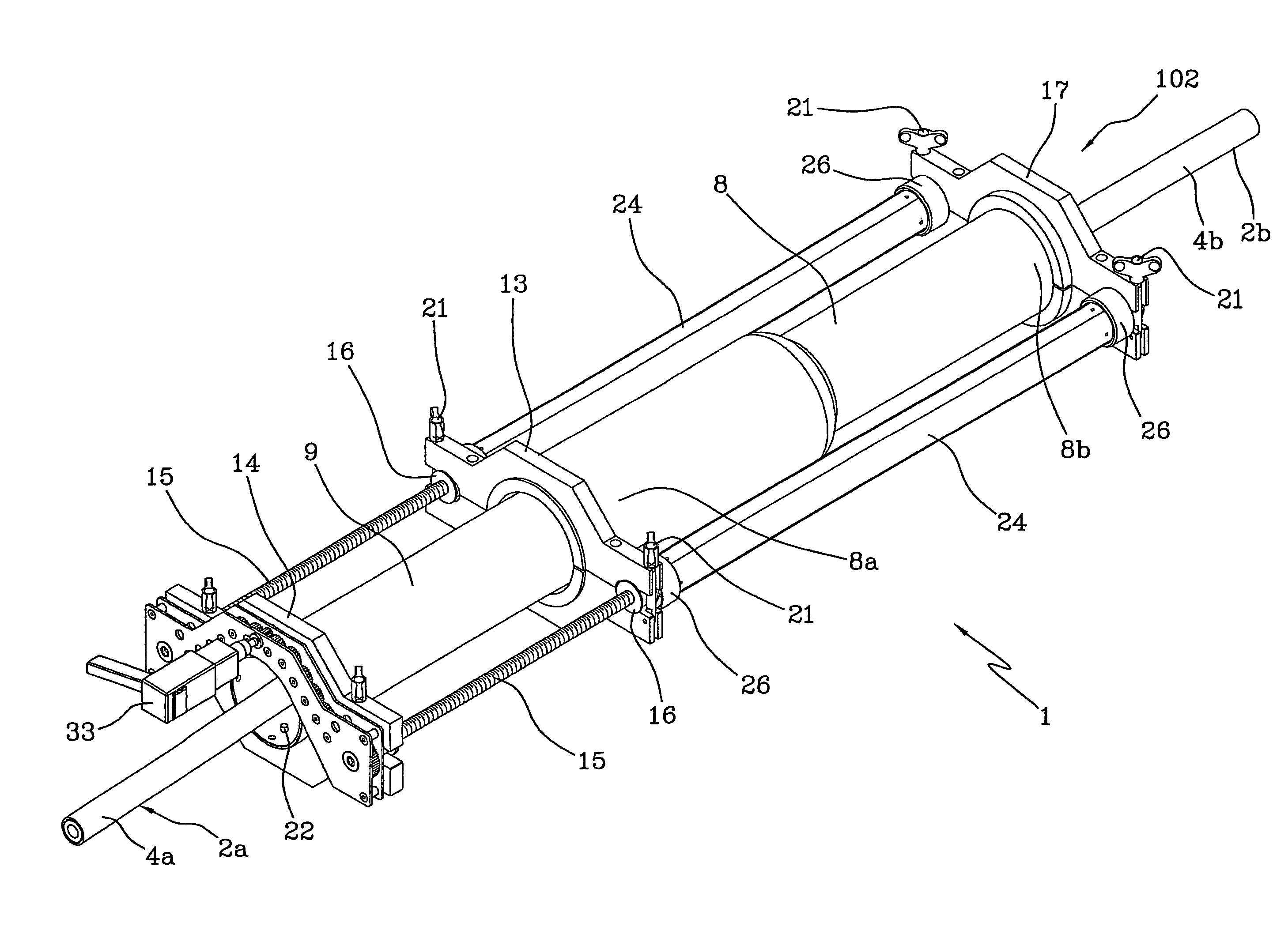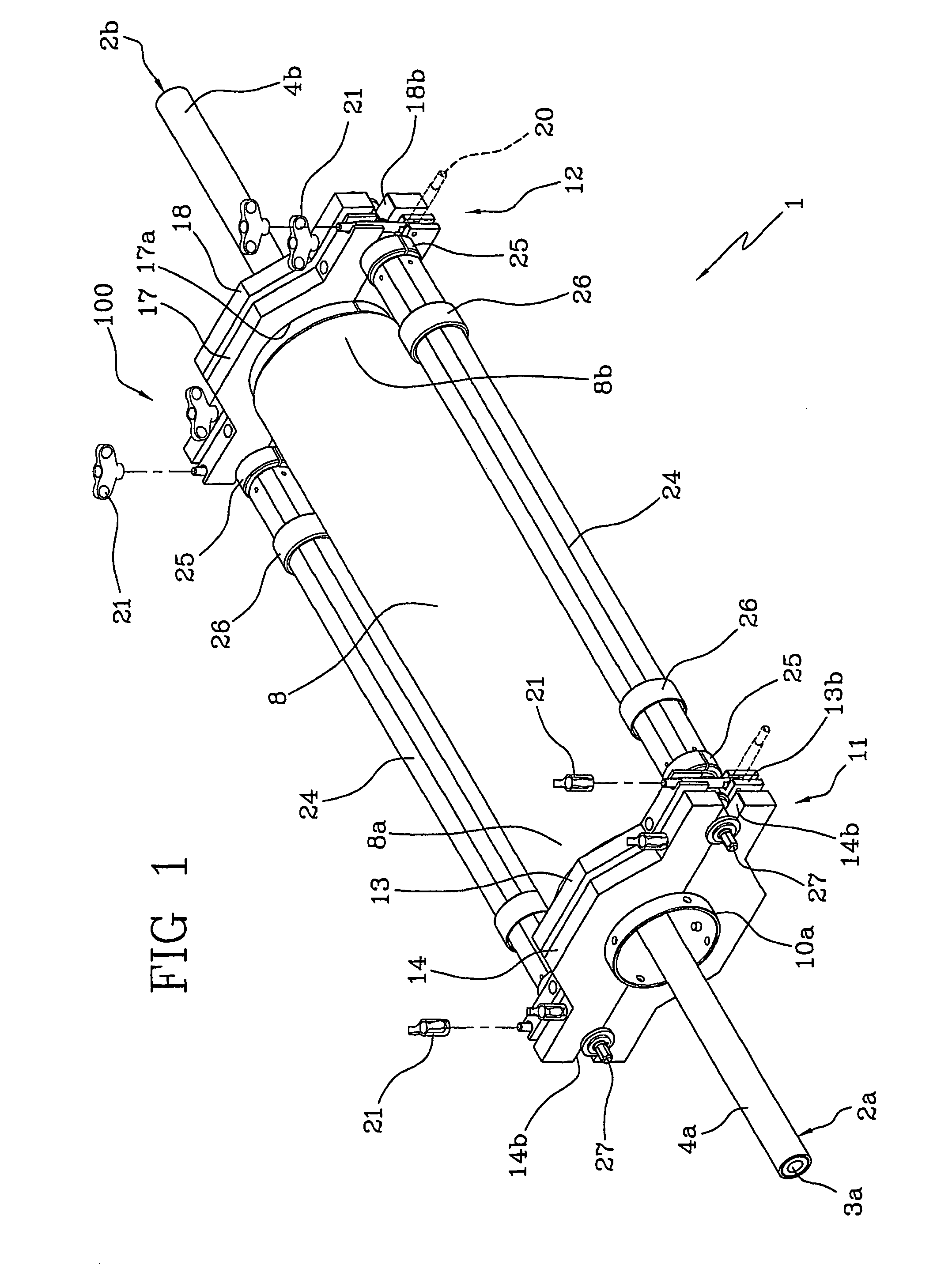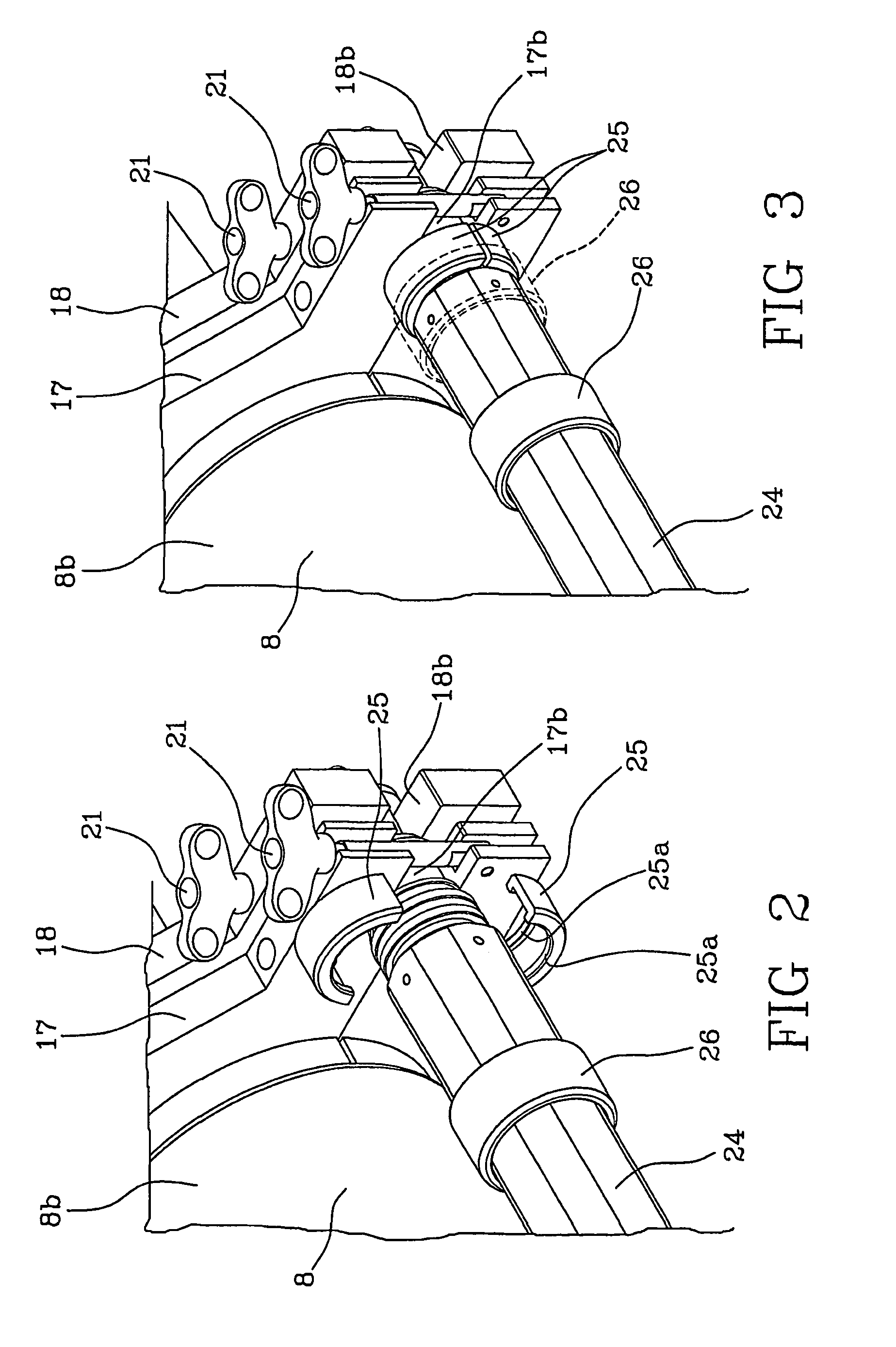Method for joining a pair of electric cables
a technology of electric cables and connecting elements, which is applied in the manufacture of cables/conductor parts, basic electric elements, electrical equipment, etc., can solve the problems of unfavorable lubricating material reduction, and precise and uniform control of the ejection speed of the supporting element. , to achieve the effect of reducing the amount of lubricating material, promoting the ejection speed of the supporting element, and reducing the amount of lub
- Summary
- Abstract
- Description
- Claims
- Application Information
AI Technical Summary
Benefits of technology
Problems solved by technology
Method used
Image
Examples
Embodiment Construction
[0048]With reference to the drawings, an apparatus to splice at least one pair of cables in accordance with the present invention has been generally identified by reference numeral 1.
[0049]In the course of the present description and in the accompanying drawings, reference will be made by way of example to the splicing between two electric high-voltage cables 2a, 2b. It is however to be pointed out that the invention can be also applied to electric connections being part of an electric and / or telecommunications network, as well as to any electric connection between one cable and one terminal of an electric apparatus.
[0050]In addition, the constituent elements of the splicing between cables 2a, 2b will not be described in detail because they can be made in a conventional manner known by itself.
[0051]Apparatus 1 lends itself to be used in creating a splicing between at least one pair of cables 2a, 2b each comprising at least one conductor 3a, 3b externally coated with a polymer sheath...
PUM
| Property | Measurement | Unit |
|---|---|---|
| voltage | aaaaa | aaaaa |
| voltage | aaaaa | aaaaa |
| voltage | aaaaa | aaaaa |
Abstract
Description
Claims
Application Information
 Login to View More
Login to View More - R&D
- Intellectual Property
- Life Sciences
- Materials
- Tech Scout
- Unparalleled Data Quality
- Higher Quality Content
- 60% Fewer Hallucinations
Browse by: Latest US Patents, China's latest patents, Technical Efficacy Thesaurus, Application Domain, Technology Topic, Popular Technical Reports.
© 2025 PatSnap. All rights reserved.Legal|Privacy policy|Modern Slavery Act Transparency Statement|Sitemap|About US| Contact US: help@patsnap.com



